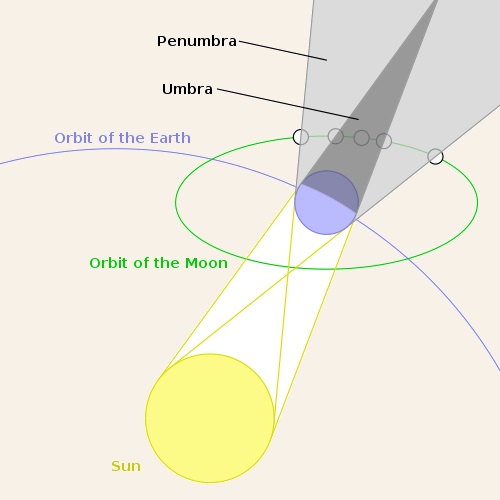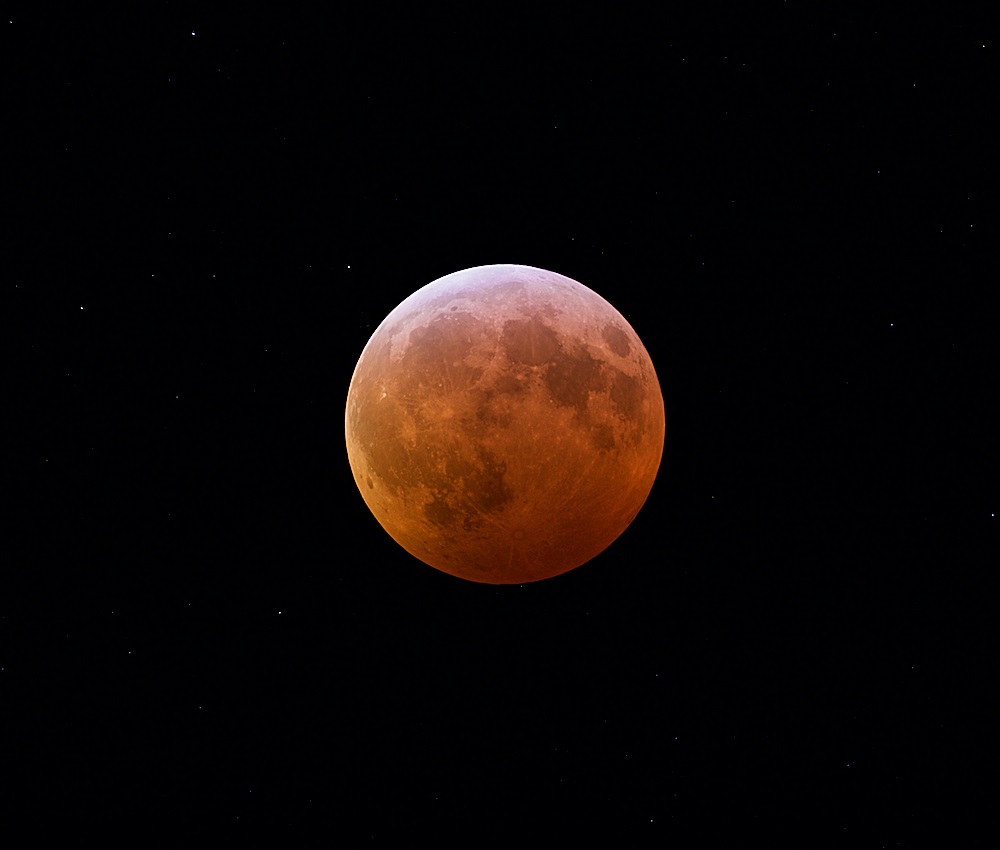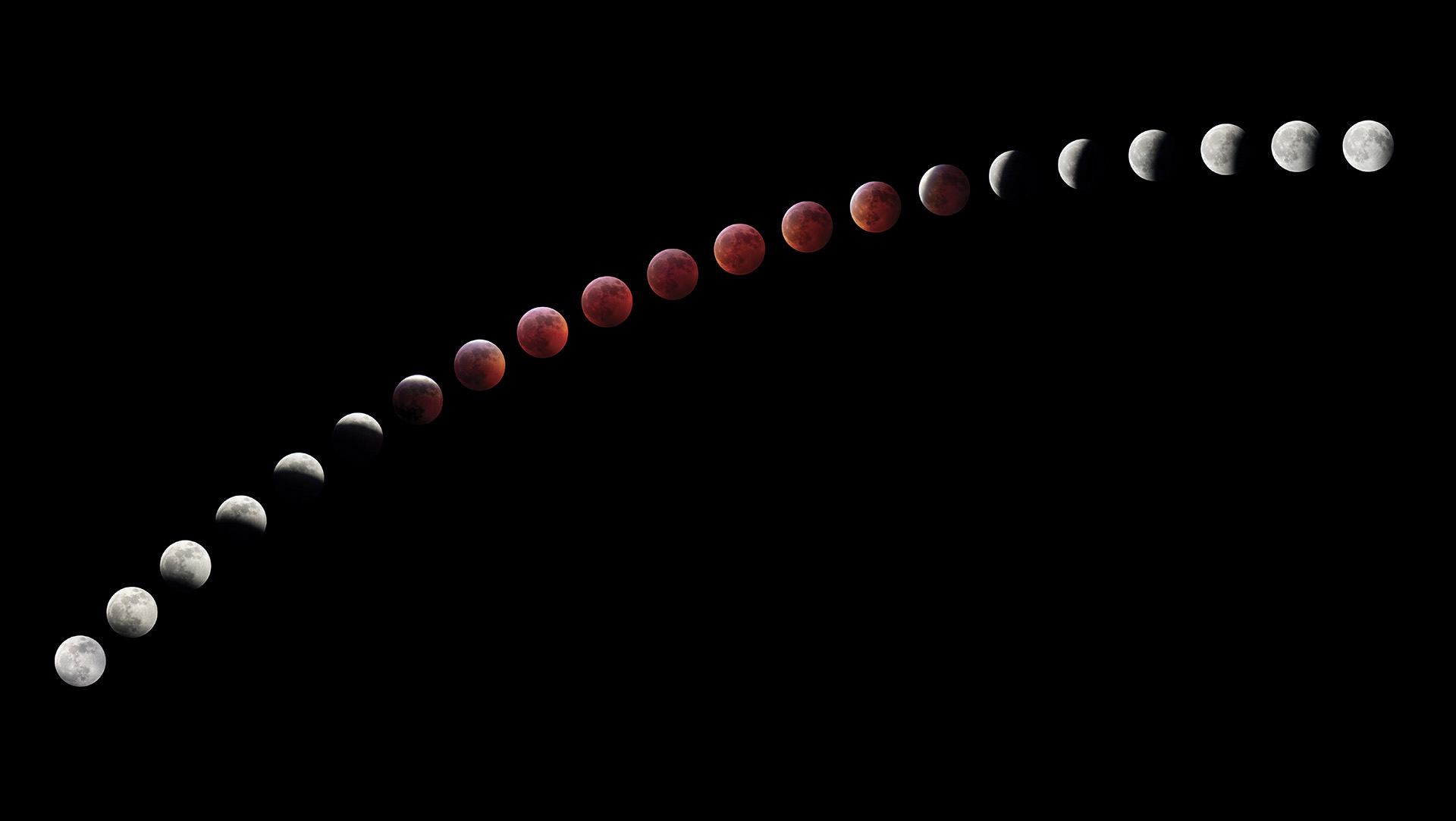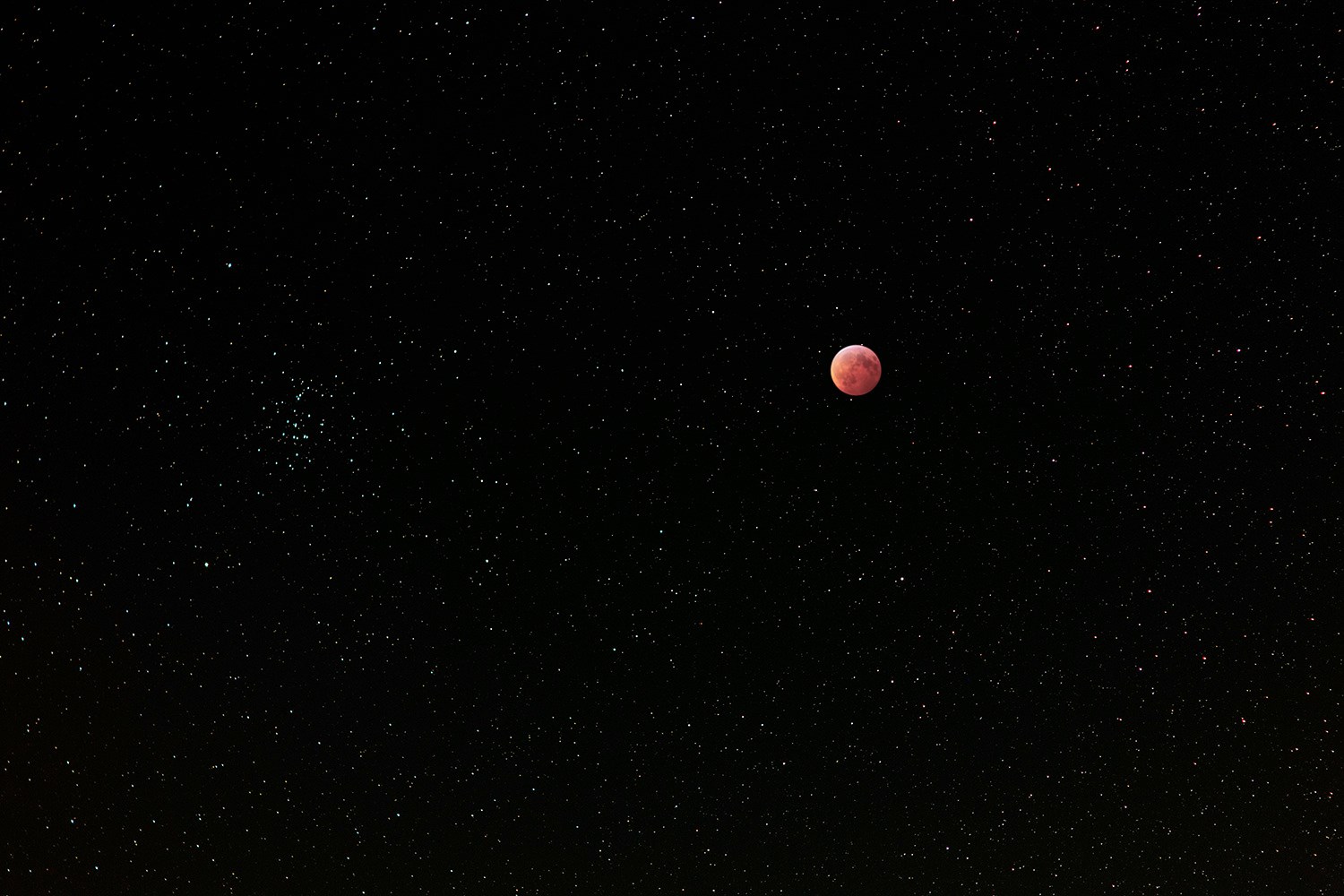Beginner's Guide
Solar System - Lunar Eclipses
Observing Lunar Eclipses
 Lunar eclipses occur when the moon passes into the shadow of the Earth. This only can happen at the time of the full moon which is when the moon
is opposite the sun.
Lunar eclipses occur when the moon passes into the shadow of the Earth. This only can happen at the time of the full moon which is when the moon
is opposite the sun.
As you can see from the lunar eclipse diagram at the right (not to scale!), there are two distinct parts of Earth's shadow: the umbra (the dark shadow) and the penumbra (light shadow). But there are three kinds of lunar eclipses: penumbral, partial, and total.
Total: A total lunar eclipse happens when the moon passes entirely into the umbra (the dark shadow). A total eclipse will also have a partial eclipse phase as well as a penumbral phase.
Partial: A partial lunar eclipse happens when the moon passes partially into the umbra (the dark shadow). A partial eclipse will also have a penumbral phase.
Penumbral: A penumbral lunar eclipse happens when the moon passes totally or partially into the penumbra (the light shadow). Lunar eclipses which are strictly penumbral eclipses can be viewed as non-events. There is only a very slight dimming of the moon which most will not even notice.
 The great feature of a total lunar eclipse is the "blood moon" which describes the orangish-red color the moon takes on when the moon moves entirely
into the umbra. This is not immediately logical! When the Earth's shadow is moving across the face of the moon it looks like the moon will be totally
obscured and therefore almost essentially invisible. But this doesn't happen because Earth has a substantial atmosphere. So the scattered light of
our atmosphere still illuminates the moon. Just like seeing a sunset, the scattered light is orange to red.
The great feature of a total lunar eclipse is the "blood moon" which describes the orangish-red color the moon takes on when the moon moves entirely
into the umbra. This is not immediately logical! When the Earth's shadow is moving across the face of the moon it looks like the moon will be totally
obscured and therefore almost essentially invisible. But this doesn't happen because Earth has a substantial atmosphere. So the scattered light of
our atmosphere still illuminates the moon. Just like seeing a sunset, the scattered light is orange to red.
One opportunity a total lunar eclipse offers is the chance to actually see stars in close proximity. When the moon is full you might be able to to see one extremely bright star, about 1st magnitude or brighter because the sky is essentially washed out. The dark background during the total phase is almost surreal.
Total lunar eclipse taken in January, 2019, by MAS member John Asztalos. It is a composite shot designed to simulate the view he saw with binoculars. M44 is the star cluster seen to the left.
Though it should go without saying, viewing a lunar eclipse is entirely safe! The confusion for the general public comes from all the dire warnings given to solar eclipses which is entirely appropriate. The public just hears the word eclipse and don't look.
Upcoming Total Lunar Eclipses
Compared to solar eclipses, lunar eclipses happen far more frequently. And the visibility is much easier. To see a total solar eclipse you have to be within the line of totality which is on average just 70 miles wide. With a lunar eclipse, if you can see the moon in the sky you'll see the event! Here are some upcoming total lunar eclipses you can see from Milwaukee (and probably most of them throughout the United States). The information is from the website: timeanddate.com.
March 13-14, 2025
| Eclipse Stages Worldwide | UTC Time | Local Time in Milwaukee* | Visible in Milwaukee |
|---|---|---|---|
| Penumbral Eclipse begins | Mar 14 at 03:57:28 | Mar 13 at 10:57:28 pm | Yes |
| Partial Eclipse begins | Mar 14 at 05:09:40 | Mar 14 at 12:09:40 am | Yes |
| Full Eclipse begins | Mar 14 at 06:26:06 | Mar 14 at 1:26:06 am | Yes |
| Maximum Eclipse | Mar 14 at 06:58:43 | Mar 14 at 1:58:43 am | Yes |
| Full Eclipse ends | Mar 14 at 07:31:26 | Mar 14 at 2:31:26 am | Yes |
| Partial Eclipse ends | Mar 14 at 08:47:52 | Mar 14 at 3:47:52 am | Yes |
| Penumbral Eclipse ends | Mar 14 at 10:00:09 | Mar 14 at 5:00:09 am | Yes |
* The Moon is above the horizon during this eclipse, so with good weather conditions in Milwaukee, the entire eclipse is visible.
March 3, 2026
| Eclipse Stages Worldwide | UTC Time | Local Time in Milwaukee* | Visible in Milwaukee |
|---|---|---|---|
| Penumbral Eclipse begins | Mar 3 at 08:44:25 | Mar 3 at 2:44:25 am | Yes |
| Partial Eclipse begins | Mar 3 at 09:50:07 | Mar 3 at 3:50:07 am | Yes |
| Full Eclipse begins | Mar 3 at 11:04:34 | Mar 3 at 5:04:34 am | Yes |
| Maximum Eclipse | Mar 3 at 11:33:46 | Mar 3 at 5:33:46 am | Yes |
| Full Eclipse ends | Mar 3 at 12:02:49 | Mar 3 at 6:02:49 am | Yes |
| Partial Eclipse ends | Mar 3 at 13:17:15 | Mar 3 at 7:17:15 am | No, below the horizon |
| Penumbral Eclipse ends | Mar 3 at 14:23:06 | Mar 3 at 8:23:06 am | No, below the horizon |
* The Moon is below the horizon in Milwaukee some of the time, so that part of the eclipse is not visible.
June 25-26, 2029
| Eclipse Stages Worldwide | UTC Time | Local Time in Milwaukee* | Visible in Milwaukee |
|---|---|---|---|
| Penumbral Eclipse begins | Jun 26 at 00:34:39 | Jun 25 at 7:34:39 pm | No, below the horizon |
| Partial Eclipse begins | Jun 26 at 01:32:26 | Jun 25 at 8:32:26 pm | Yes |
| Full Eclipse begins | Jun 26 at 02:31:17 | Jun 25 at 9:31:17 pm | Yes |
| Maximum Eclipse | Jun 26 at 03:22:14 | Jun 25 at 10:22:14 pm | Yes |
| Full Eclipse ends | Jun 26 at 04:13:07 | Jun 25 at 11:13:07 pm | Yes |
| Partial Eclipse ends | Jun 26 at 05:11:56 | Jun 26 at 12:11:56 am | Yes |
| Penumbral Eclipse ends | Jun 26 at 06:09:51 | Jun 26 at 1:09:51 am | Yes |
* The Moon is below the horizon in Milwaukee some of the time, so that part of the eclipse is not visible.
October 8, 2033
| Eclipse Stages Worldwide | UTC Time | Local Time in Milwaukee* | Visible in Milwaukee |
|---|---|---|---|
| Penumbral Eclipse begins | Oct 8 at 08:18:51 | Oct 8 at 3:18:51 am | Yes |
| Partial Eclipse begins | Oct 8 at 09:14:00 | Oct 8 at 4:14:00 am | Yes |
| Full Eclipse begins | Oct 8 at 10:15:49 | Oct 8 at 5:15:49 am | Yes |
| Maximum Eclipse | Oct 8 at 10:55:11 | Oct 8 at 5:55:11 am | Yes |
| Full Eclipse ends | Oct 8 at 11:34:34 | Oct 8 at 6:34:34 am | Yes |
| Partial Eclipse ends | Oct 8 at 12:36:23 | Oct 8 at 7:36:23 am | No, below the horizon |
| Penumbral Eclipse ends | Oct 8 at 13:31:33 | Oct 8 at 8:31:33 am | No, below the horizon |
* The Moon is below the horizon in Milwaukee some of the time, so that part of the eclipse is not visible.


